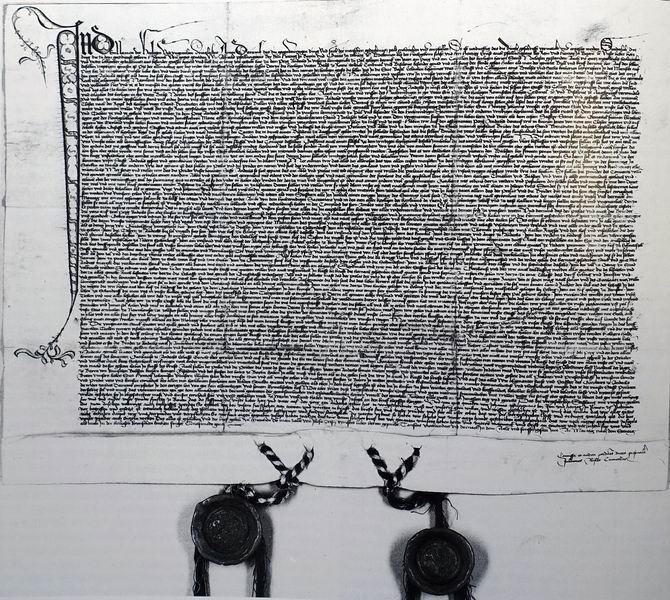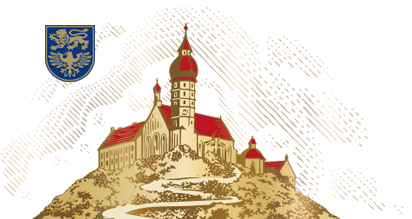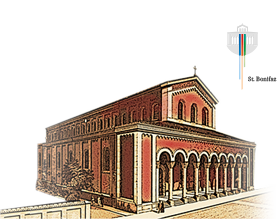Founding of the monastery
The prehistory of the monastery’s founding goes back to the year 1388. After the Andechs-Meranians died out in the mid-13th century, the relics were thought to have been lost.

According to lore, a mouse during a celebration of the Mass in the former castle chapel in 1388 dragged a fragment of a former relic inventory into the light of day. During subsequent excavations under the castle chapel’s altar, a box was found containing parts of the „collection of relics“ Wrapped in the bridal gown of Saint Elisabeth, the three Sacred Hosts were revealed among other things.
The relics were brought to Munich at the end of 1389, to the ducal chapel in the Alter Hof, and exhibited for worship during the Holy Year of 1392. Sacrifice money was collected even then – likely with the goal of building an monastery on the Andechser Berg. Numerous donations since 1394 also indicate the founding of an monastery.
The church that stands to this day was built during the period of around 1416 to 1423 as a Gothic hall church with three naves. The builder was Duke Ernst (1373-1438), who also named the Andechs mountain the “Heilige Berg” (Holy Mountain). The collection of relics came back to Andechs no later than in 1425. Canons Regular of St. Augustine from Dießen first looked after the church and pilgrimage, then an association of secular priests – albeit without the desired success. The son of Duke Ernst, Duke Albrecht III (1438-1460), therefore asked for Benedictines from the Tegernsee Monastery to oversee the pilgrimage in Andechs.
The monastery was founded by Albrecht III in 1455. Three years later, he laid down the monastery’s basic outline in the “Stiftsbrief”, the founding document. Worship, care and safekeeping of the relics, memorial prayer and a perpetual anniversary for the founders as well as church use of the pilgrimage contributions were assigned to the monks as their sacred duties. The monastery got its first abbot, Eberhard Stöcklin (1458-1462), in 1458. Duke Albrecht III also selected the monastery as his burial place. He was interred here after his death in 1460.




